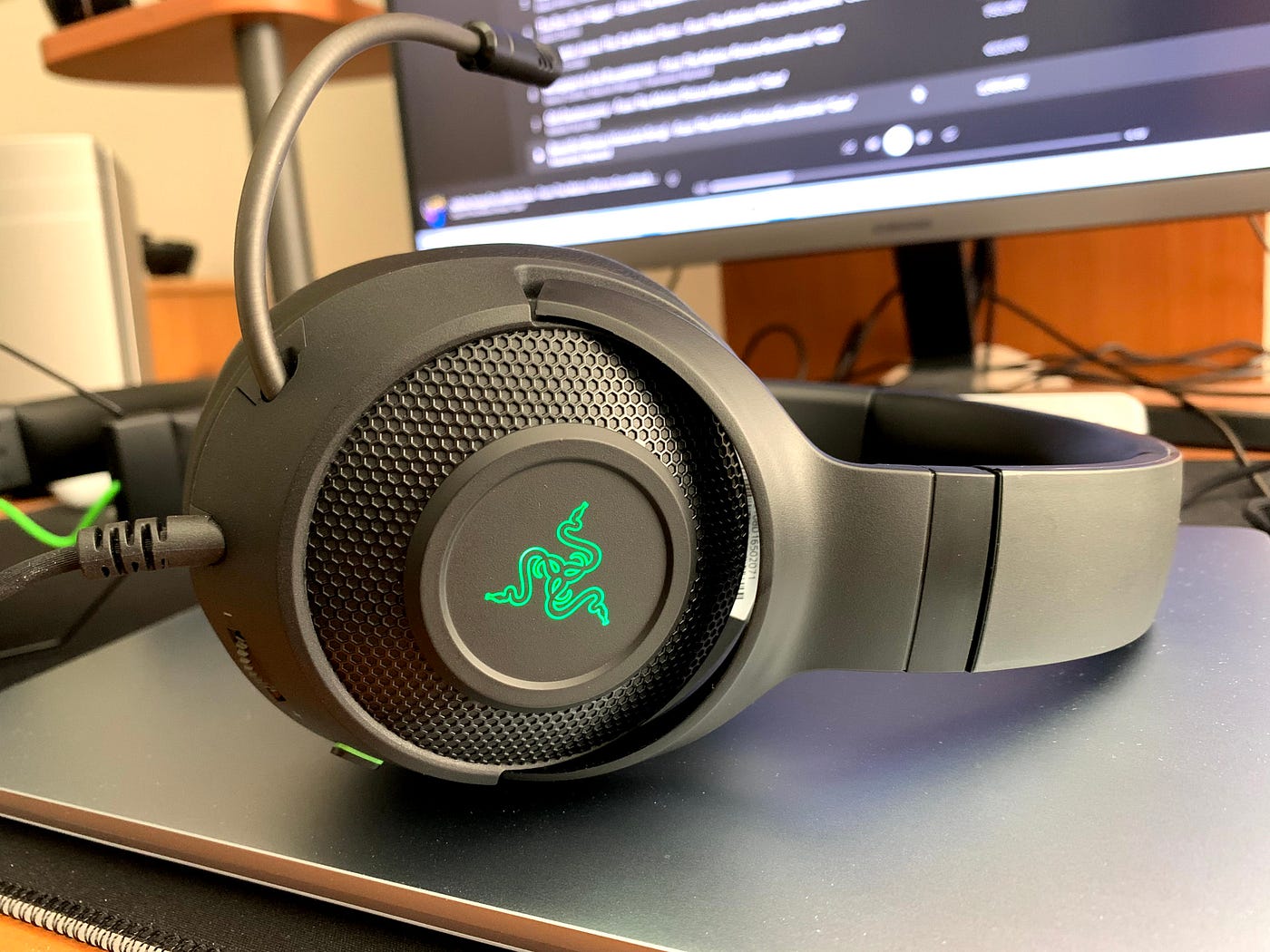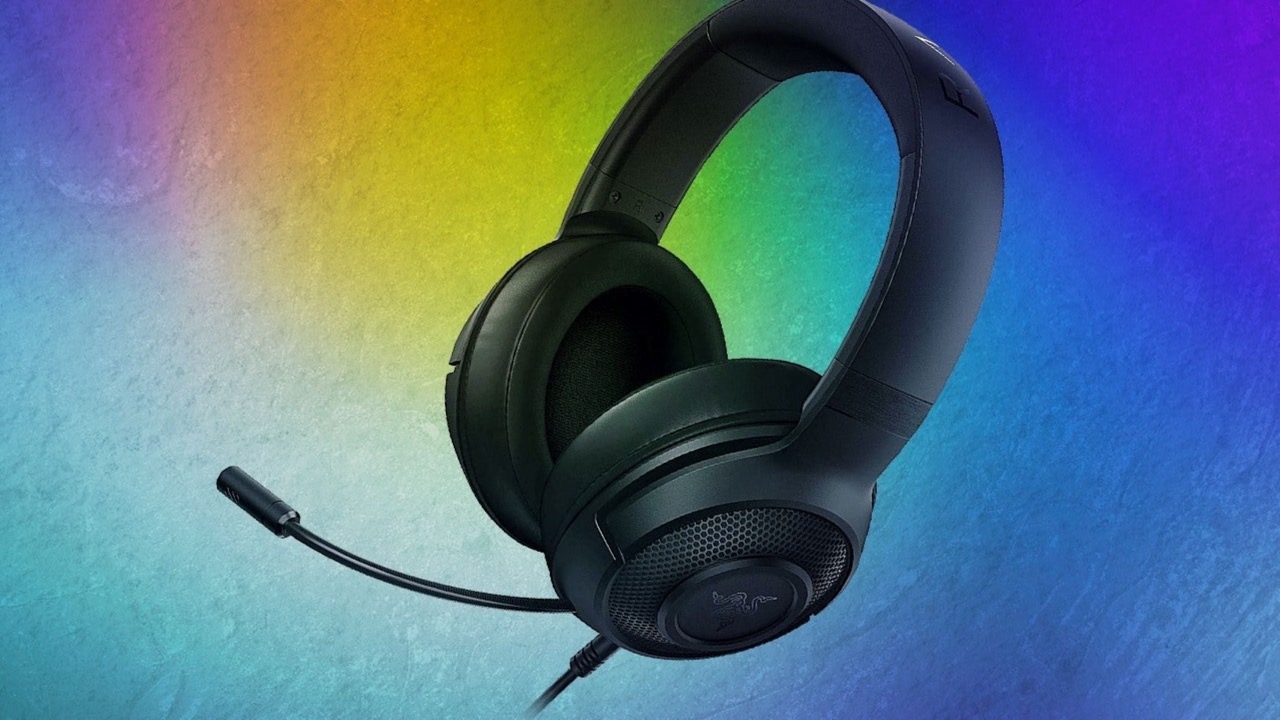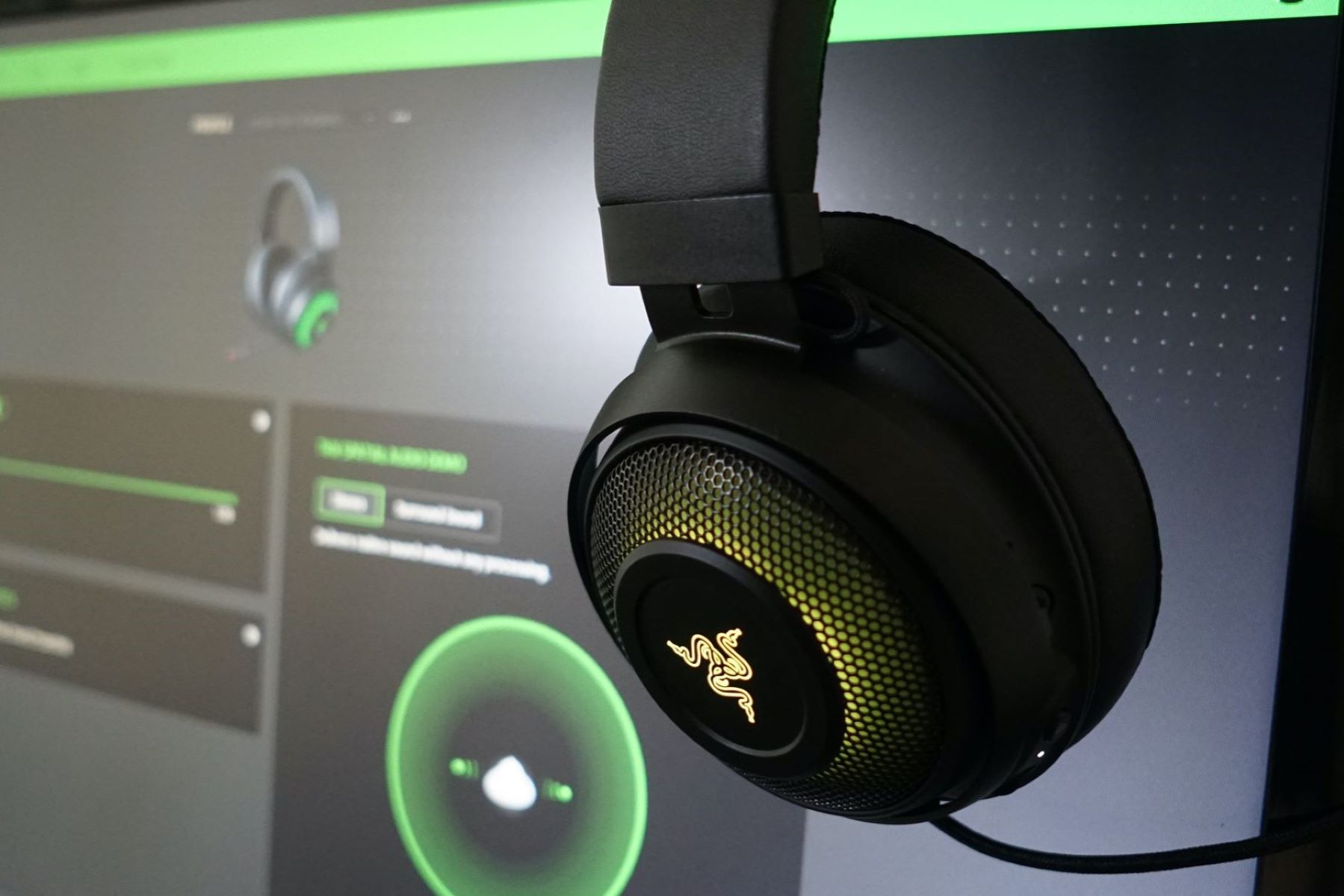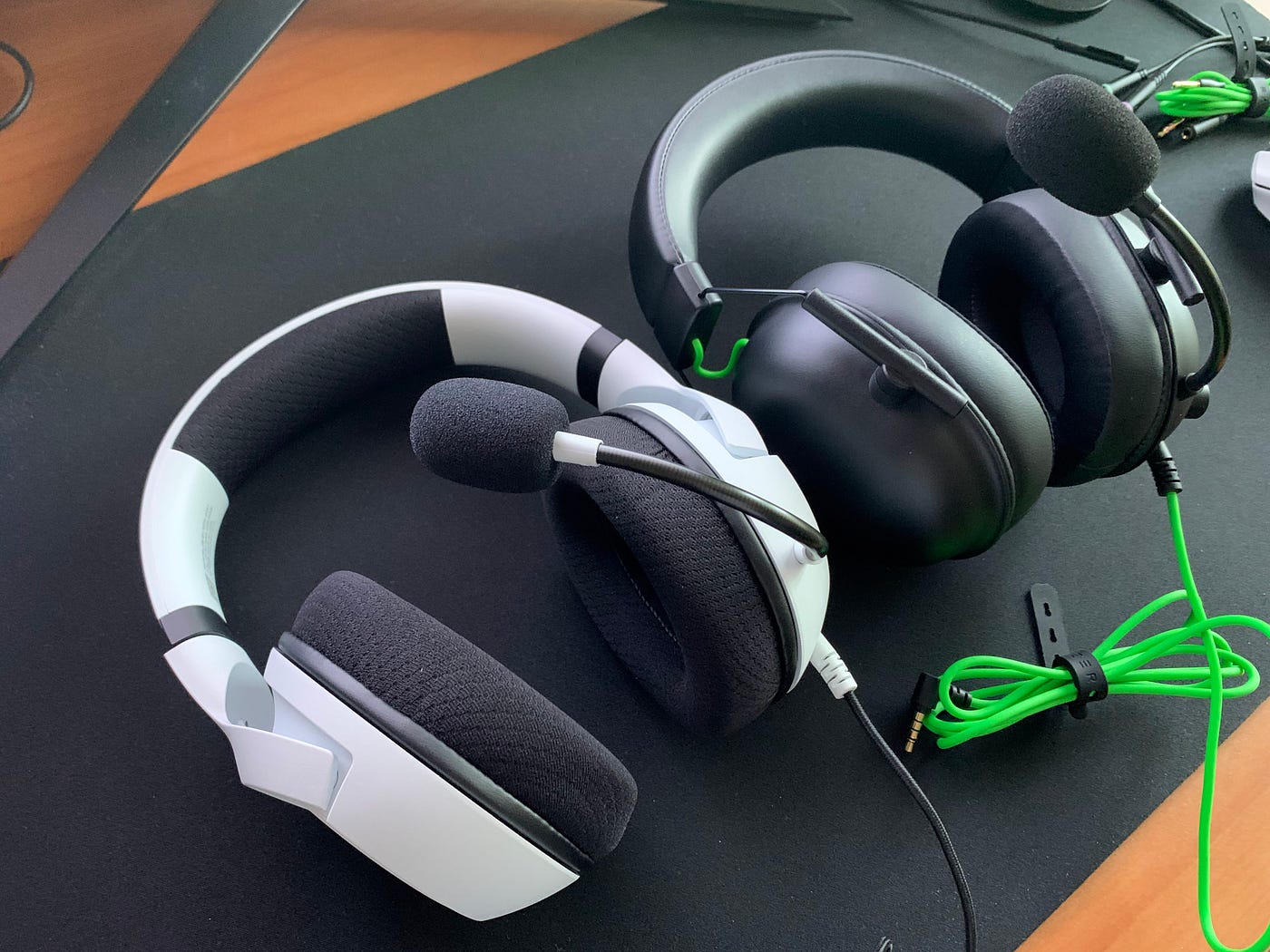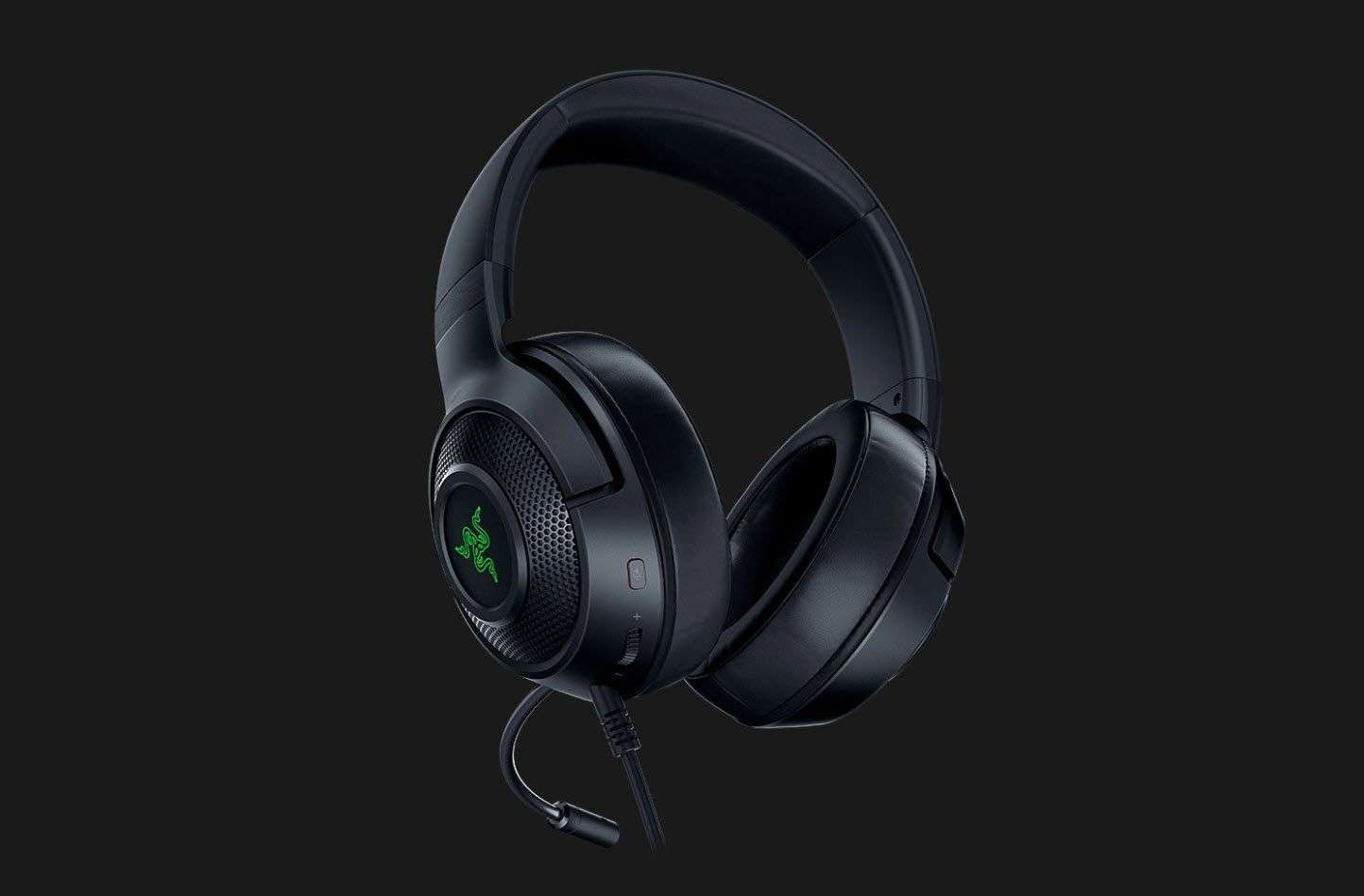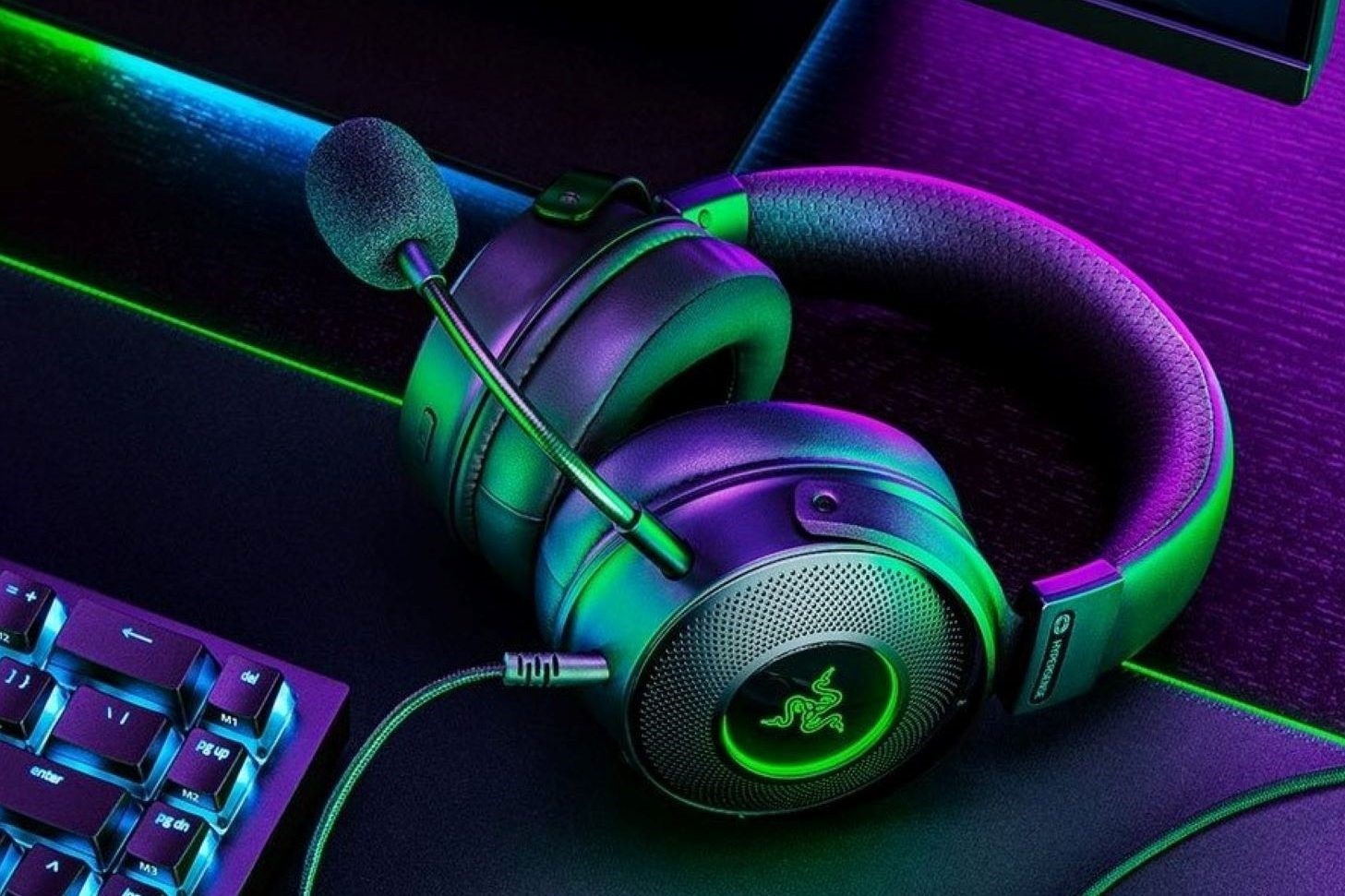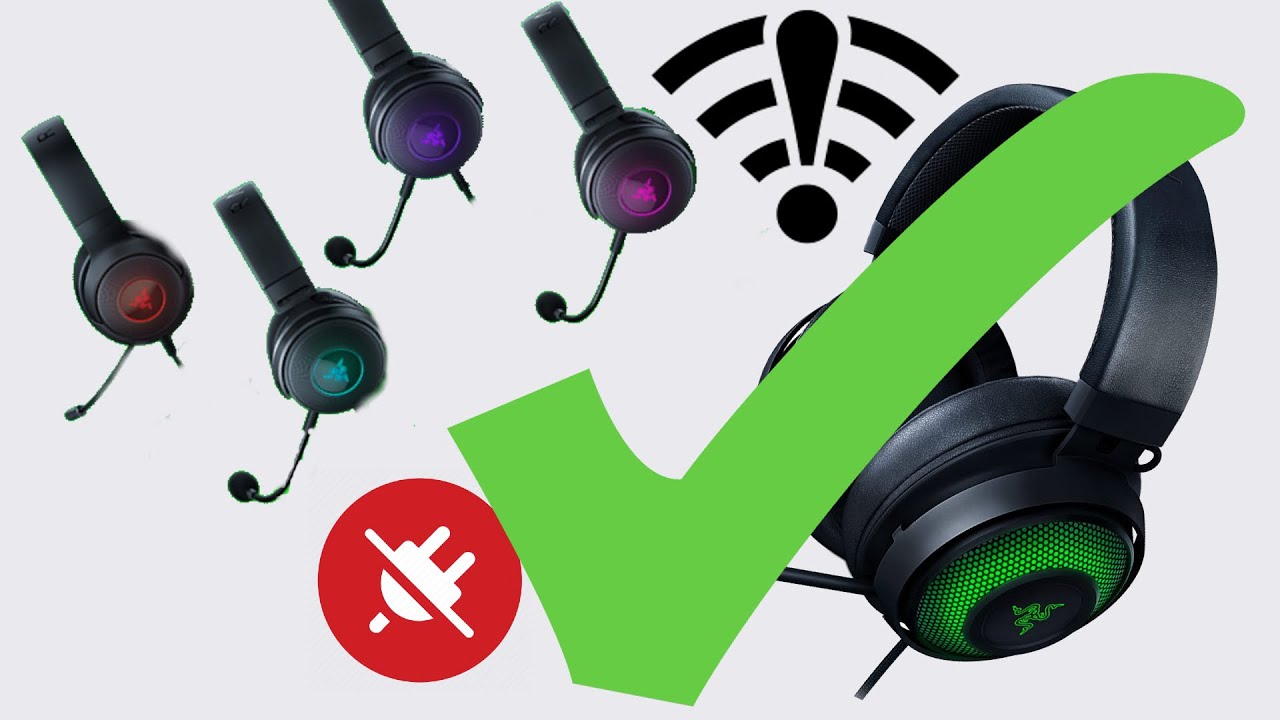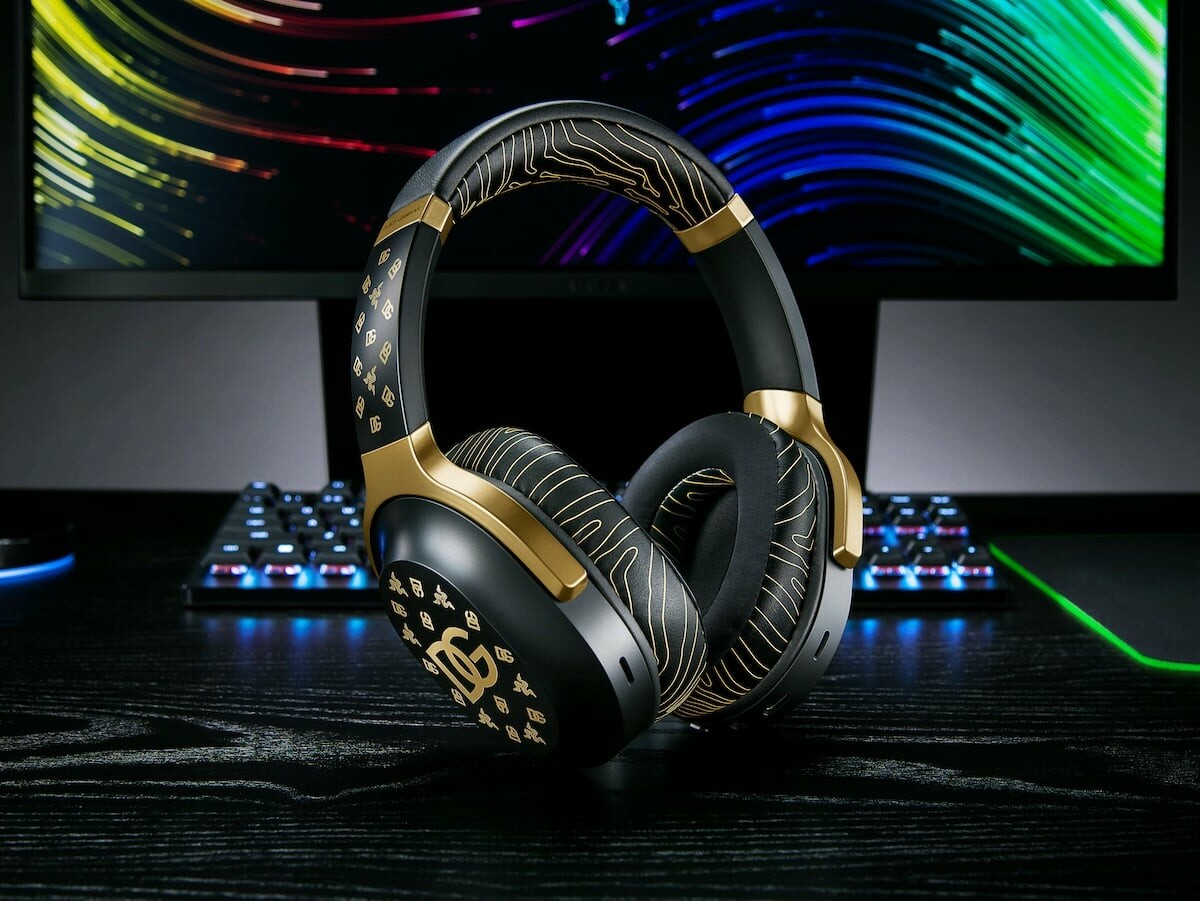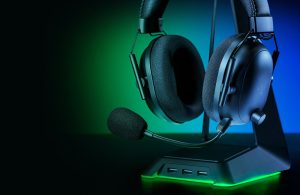Introduction
Razer headsets are renowned for their cutting-edge technology and immersive sound quality, making them a popular choice among gamers, audiophiles, and professionals alike. However, despite their exceptional performance, users may encounter the frustrating issue of their Razer headset disconnecting unexpectedly. This problem can disrupt gaming sessions, virtual meetings, or entertainment experiences, leading to a significant inconvenience.
In this comprehensive guide, we will delve into the common causes of Razer headset disconnections and provide practical troubleshooting steps to resolve this issue. Whether you're using a Razer Kraken, BlackShark, or any other model, these troubleshooting techniques can help you get your headset back up and running seamlessly.
By following the troubleshooting steps outlined in this guide, you can regain uninterrupted audio communication and immerse yourself in your favorite games, music, or virtual environments without the disruption of frequent disconnections. Let's explore the potential reasons behind Razer headset disconnects and equip ourselves with the knowledge and solutions to address this issue effectively.
Check the Connection
The first step in troubleshooting Razer headset disconnects is to meticulously examine the physical and digital connections. A loose or faulty connection can often be the root cause of intermittent disconnections. Here's a comprehensive approach to checking the connection and ensuring a stable link between your Razer headset and the connected device:
-
Inspect the Cable: Begin by examining the headset cable for any signs of wear, fraying, or damage. A damaged cable can lead to intermittent disconnections. If any issues are detected, consider replacing the cable with a compatible and high-quality alternative.
-
USB Port: If your Razer headset is connected via USB, ensure that the USB port on your device is fully functional. Try plugging the headset into different USB ports to rule out any issues with a specific port.
-
Audio Jack: For headsets that utilize an audio jack, verify that the jack is securely inserted into the audio port of your device. A loose connection can result in intermittent audio disruptions.
-
Wireless Connection: If you're using a wireless Razer headset, check the wireless receiver or transmitter for any obstructions or interference that may disrupt the signal. Ensure that the receiver is positioned within the recommended range for optimal connectivity.
-
Bluetooth Settings: In the case of Bluetooth-enabled Razer headsets, ensure that the headset is paired correctly with the device and that Bluetooth connectivity is stable. Check for any conflicting Bluetooth devices in the vicinity that may be causing interference.
-
Device Compatibility: Confirm that your Razer headset is compatible with the operating system of your device. Some headsets may require specific drivers or software for seamless integration with certain operating systems.
By meticulously examining and addressing any issues related to the physical and digital connections, you can potentially resolve Razer headset disconnects stemming from connectivity issues. Once you've ensured a stable and secure connection, proceed to the next troubleshooting steps to further diagnose and rectify any persistent disconnection issues.
Update Firmware and Software
Keeping the firmware and software of your Razer headset and connected devices up to date is crucial for ensuring optimal performance and addressing potential connectivity issues. Outdated firmware or software can lead to compatibility issues, erratic behavior, and intermittent disconnections. By proactively updating the firmware and relevant software, you can potentially resolve Razer headset disconnects and benefit from enhanced stability and functionality.
Firmware Update:
Razer periodically releases firmware updates for their headsets to improve performance, address known issues, and introduce new features. To check for firmware updates for your Razer headset, visit the official Razer support website or utilize the Razer Synapse software, if applicable. Follow the provided instructions to download and install the latest firmware for your headset model. Firmware updates often include optimizations for connectivity, audio processing, and power management, which can directly impact the stability of your headset's connection.
Software Update:
In addition to the headset firmware, it's essential to ensure that the software drivers and applications associated with your Razer headset and connected devices are up to date. This includes audio drivers, USB drivers, and any proprietary software provided by Razer for headset configuration and customization. Outdated software can lead to compatibility issues and hinder the seamless operation of your headset. Visit the official Razer support website to download the latest software drivers and applications compatible with your headset and operating system.
Benefits of Updating:
By updating the firmware and software, you can potentially resolve underlying connectivity issues that contribute to Razer headset disconnects. Furthermore, firmware and software updates often incorporate performance enhancements, bug fixes, and stability improvements, which can positively impact the overall user experience. Updated firmware and software are designed to address known issues and provide a more reliable and seamless audio communication experience, whether you're immersed in gaming, engaging in virtual meetings, or enjoying multimedia content.
Proactive Maintenance:
Regularly checking for firmware and software updates and proactively applying them to your Razer headset and connected devices is a proactive approach to maintaining optimal performance and addressing potential connectivity issues. By staying current with the latest firmware and software releases, you can minimize the likelihood of encountering intermittent disconnections and ensure that your Razer headset operates at its best.
By prioritizing the update of firmware and software for your Razer headset and associated devices, you can potentially mitigate the occurrence of headset disconnects and enjoy uninterrupted audio communication and immersive experiences. Always refer to the official Razer support resources for the latest firmware and software updates specific to your headset model and connected devices.
Adjust Power Management Settings
Adjusting power management settings can play a pivotal role in addressing Razer headset disconnects, especially in scenarios where power-saving features or aggressive power management settings may inadvertently disrupt the headset's connectivity. By fine-tuning power management configurations, you can optimize the power delivery to USB ports, wireless receivers, and other relevant components, potentially mitigating the occurrence of intermittent disconnections. Here's a detailed exploration of the steps involved in adjusting power management settings to enhance the stability of your Razer headset's connection.
USB Power Management:
For Razer headsets that utilize a USB connection, it's essential to review and adjust the power management settings associated with the USB ports on your device. Windows operating systems, for instance, offer power management options that allow users to control the power delivery to USB ports. To access these settings, follow these steps:
- Right-click on the Start button and select "Device Manager" from the context menu.
- In the Device Manager window, expand the "Universal Serial Bus controllers" category to reveal the USB controllers.
- Right-click on each USB root hub and select "Properties."
- Navigate to the "Power Management" tab and uncheck the option that allows the computer to turn off the device to save power.
By disabling the power-saving feature for USB ports, you can ensure a consistent power supply to your Razer headset, potentially resolving connectivity issues attributed to power interruptions.
Wireless Receiver Power Management:
If you're using a wireless Razer headset with a dedicated receiver or transmitter, it's important to review the power management settings associated with the receiver. Wireless receivers often rely on USB ports for power, and adjusting the power management settings for these ports can contribute to a more stable wireless connection. Follow these steps to adjust the power management settings for the wireless receiver:
- Access the Device Manager as described earlier.
- Locate the entry corresponding to the wireless receiver or transmitter under the "Universal Serial Bus controllers" category.
- Access the properties of the wireless receiver and navigate to the "Power Management" tab.
- Disable the option to allow the computer to turn off the device to save power.
By preventing the computer from turning off the wireless receiver to conserve power, you can maintain a consistent and uninterrupted wireless connection for your Razer headset.
Power Plan Optimization:
In addition to specific USB and wireless receiver settings, optimizing the power plan of your device can contribute to a more stable power delivery and overall system performance. Windows provides power plans that allow users to customize power management settings to suit their preferences. To optimize the power plan for enhanced stability and connectivity, consider the following steps:
- Open the Control Panel and navigate to "Power Options."
- Select the power plan that is currently active and click on "Change plan settings."
- Access the advanced power settings and review the options related to USB settings, wireless adapter settings, and power management.
- Customize the power settings to prevent the system from entering aggressive power-saving modes that may disrupt the connectivity of your Razer headset.
By customizing the power plan settings to prioritize stable power delivery and connectivity, you can potentially alleviate Razer headset disconnects attributed to power management fluctuations.
Proactive Monitoring:
After adjusting the power management settings, it's beneficial to monitor the performance and connectivity of your Razer headset to assess the impact of the changes. Test the headset in various usage scenarios, such as gaming, multimedia playback, and communication applications, to ensure that the connectivity remains stable and uninterrupted. Proactive monitoring allows you to validate the effectiveness of the power management adjustments and make further refinements if necessary.
By diligently adjusting the power management settings to optimize the power delivery and system stability, you can potentially resolve Razer headset disconnects stemming from power-related interruptions. This proactive approach can contribute to a more reliable and seamless audio communication experience, empowering you to fully immerse yourself in your favorite activities without the disruption of intermittent disconnections.
Disable USB Selective Suspend
Disabling USB Selective Suspend is a crucial step in troubleshooting Razer headset disconnects, particularly for USB-connected headsets. USB Selective Suspend is a power-saving feature implemented by the Windows operating system to conserve energy by selectively suspending individual USB ports. While this feature is designed to optimize power usage, it can inadvertently lead to intermittent disconnections and disruptions in the connectivity of USB peripherals, including Razer headsets.
To disable USB Selective Suspend and mitigate potential connectivity issues, follow these steps:
-
Access Power Plan Settings: Begin by accessing the advanced power settings of your Windows device. This can be achieved by navigating to the Control Panel and selecting "Power Options." From there, choose the active power plan and proceed to the advanced power settings.
-
Locate USB Settings: Within the advanced power settings, locate the section related to USB settings. This section contains options that govern the behavior of USB devices in response to power management configurations.
-
Disable USB Selective Suspend: Once you've accessed the USB settings, look for the specific option labeled "USB Selective Suspend Setting." By default, this option is often set to "Enabled." To address potential connectivity issues with your Razer headset, disable this feature by changing the setting to "Disabled."
By disabling USB Selective Suspend, you effectively prevent the Windows operating system from selectively suspending USB ports to conserve power. This proactive adjustment can lead to a more consistent power supply to your Razer headset, reducing the likelihood of intermittent disconnections and enhancing overall connectivity stability.
After disabling USB Selective Suspend, it's advisable to monitor the performance of your Razer headset in various usage scenarios to assess the impact of the change. Testing the headset across gaming, multimedia playback, and communication applications allows you to validate the effectiveness of the adjustment and ensure that the connectivity remains stable and uninterrupted.
By implementing this essential step of disabling USB Selective Suspend, you can address potential connectivity disruptions and contribute to a more reliable audio communication experience with your Razer headset. This proactive measure aligns with the goal of optimizing power management settings to maintain stable connectivity, empowering you to fully immerse yourself in your favorite activities without the inconvenience of frequent headset disconnects.
Check for Hardware Issues
When troubleshooting Razer headset disconnects, it is imperative to thoroughly inspect the hardware components for potential issues that may contribute to intermittent disconnections. Hardware-related issues can encompass a range of factors, including physical damage, component malfunction, and environmental factors. By meticulously examining the hardware elements of your Razer headset and associated devices, you can identify and address potential sources of connectivity disruptions.
Visual Inspection:
Initiate the hardware assessment by visually inspecting the Razer headset and its accessories for any visible signs of damage or wear. Check the headset cable, connectors, and ear cups for fraying, kinks, or other forms of physical damage that may compromise the integrity of the headset. Additionally, examine the USB connector or audio jack for any deformities or foreign objects that could impede a secure connection.
Environmental Factors:
Consider the environmental conditions in which the Razer headset is used. Excessive heat, humidity, or exposure to liquids can impact the functionality of electronic devices, potentially leading to connectivity issues. Ensure that the headset is utilized within recommended environmental parameters to mitigate the risk of hardware-related malfunctions.
Device Compatibility:
Verify the compatibility of the Razer headset with the devices to which it is connected. Incompatibility issues can arise when using the headset with devices that lack the necessary drivers, software support, or hardware specifications. Refer to the official compatibility guidelines provided by Razer to confirm that your headset is seamlessly integrated with the connected devices.
Audio Jack and USB Port Examination:
For wired Razer headsets, inspect the audio jack and USB port of the connected device for any anomalies. The audio jack should provide a secure and stable connection, free from obstructions or damage. Similarly, the USB port should be free from debris and capable of maintaining a consistent connection with the headset.
Wireless Interference:
If using a wireless Razer headset, assess the immediate vicinity for potential sources of wireless interference. Other electronic devices, wireless routers, and Bluetooth peripherals can introduce interference that disrupts the wireless signal of the headset. Position the wireless receiver or transmitter in a location that minimizes potential interference, allowing for optimal connectivity.
By meticulously checking for hardware issues encompassing physical integrity, environmental considerations, device compatibility, and potential interference, you can effectively identify and address factors that may contribute to Razer headset disconnects. This comprehensive hardware assessment aligns with the objective of ensuring a stable and uninterrupted audio communication experience, enabling users to fully leverage the capabilities of their Razer headsets without the inconvenience of connectivity disruptions.
Contact Razer Support
If you've diligently followed the troubleshooting steps outlined in this guide and are still experiencing persistent disconnect issues with your Razer headset, it's essential to reach out to Razer's dedicated support channels for expert assistance. Razer's support team comprises knowledgeable professionals who specialize in addressing technical issues and providing tailored solutions to ensure the optimal performance of Razer products.
Official Support Resources
Razer offers a comprehensive range of support resources, including online knowledge bases, community forums, and direct customer support channels. Accessing these resources can provide valuable insights, troubleshooting tips, and access to firmware or software updates specific to your Razer headset model.
Online Support Portal
Visit Razer's official website to explore the support portal, where you can access product-specific guides, FAQs, and troubleshooting articles. The support portal serves as a valuable repository of information, empowering users to self-diagnose potential issues and explore recommended solutions.
Community Forums
Engage with the vibrant Razer community through the official forums, where users share experiences, troubleshooting insights, and best practices for optimizing Razer products. Participating in the forums allows you to benefit from the collective knowledge and experiences of fellow Razer enthusiasts, potentially uncovering unique perspectives and solutions to address headset disconnect issues.
Direct Customer Support
For personalized assistance and direct guidance, consider reaching out to Razer's customer support team through the provided contact channels. Whether through email, live chat, or phone support, Razer's customer support representatives are equipped to address technical inquiries, provide advanced troubleshooting guidance, and facilitate potential warranty-related solutions.
Warranty and Service Options
If the disconnect issues persist and are determined to be hardware-related, Razer's support team can provide guidance on warranty coverage and service options. Razer's commitment to customer satisfaction includes comprehensive warranty coverage for eligible products, ensuring that users receive the necessary support and resolution for hardware-related issues.
By leveraging Razer's official support resources and engaging with their dedicated support team, you can access the expertise and assistance needed to effectively resolve persistent disconnect issues with your Razer headset. Razer's customer-centric approach aims to empower users with the support and guidance necessary to fully enjoy their Razer products, fostering a seamless and immersive audio communication experience.
Remember, Razer's support team is dedicated to ensuring the satisfaction of their users and is committed to addressing technical challenges to uphold the performance and reliability of Razer headsets. Don't hesitate to leverage the available support channels to gain the assistance you need in resolving headset disconnect issues and maximizing the potential of your Razer audio experience.







